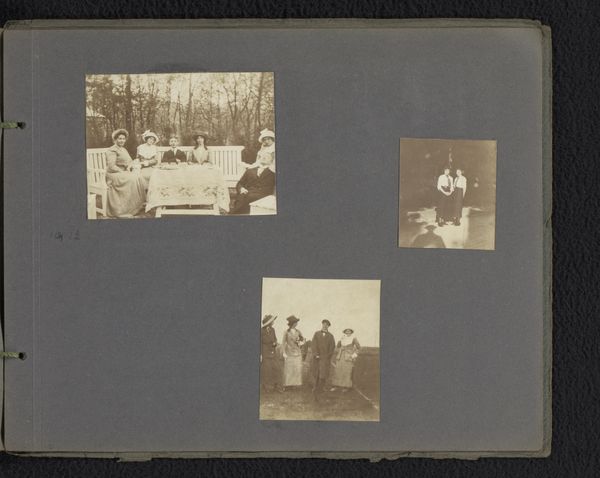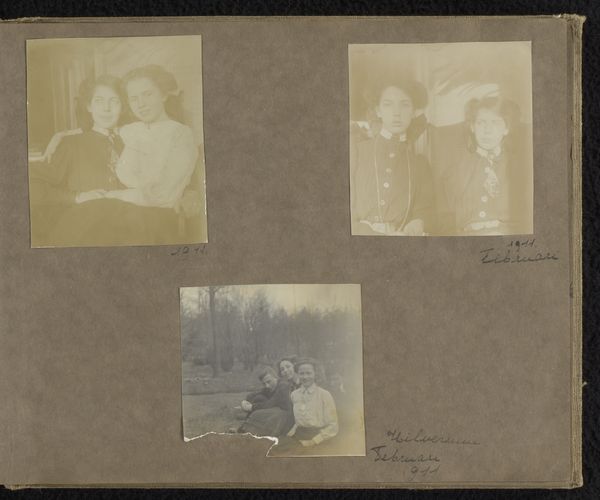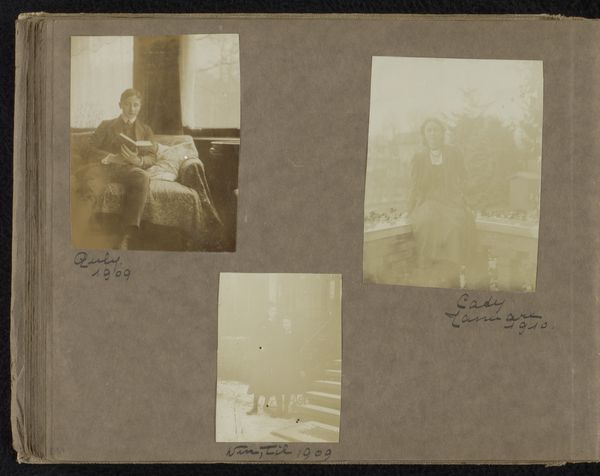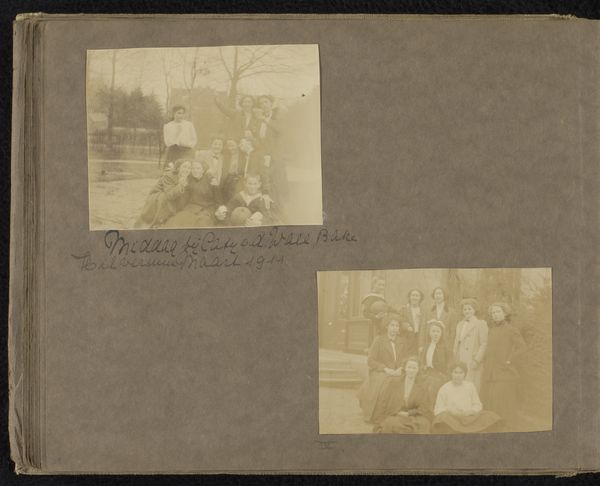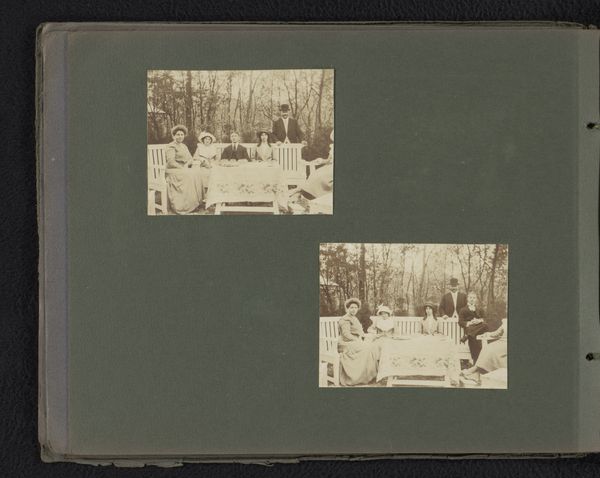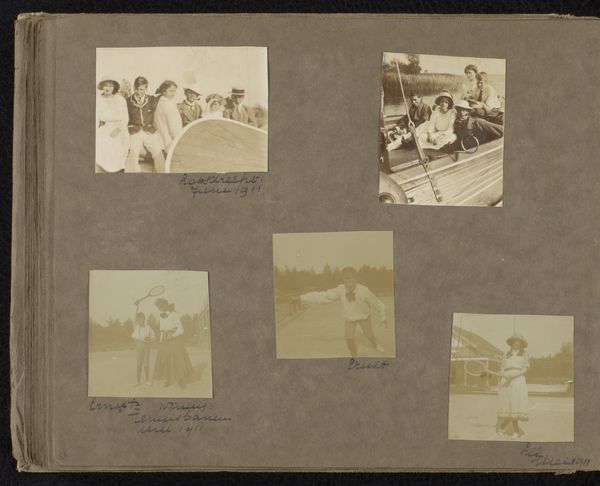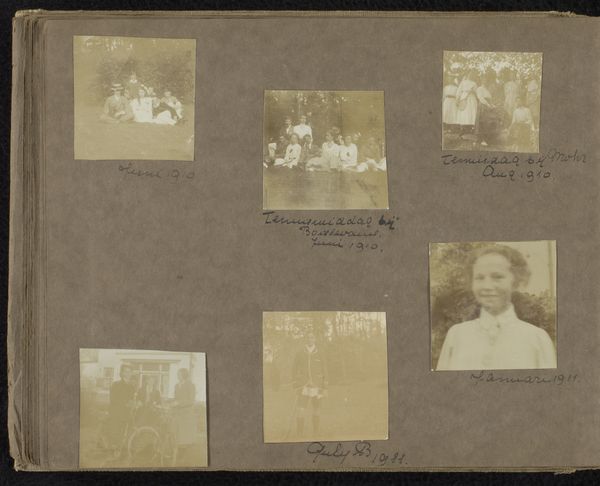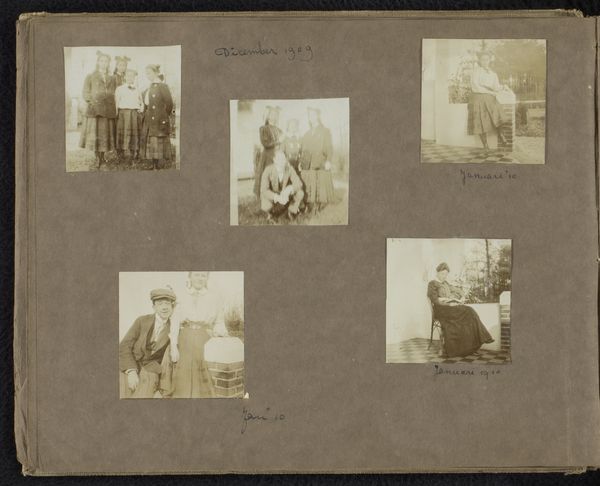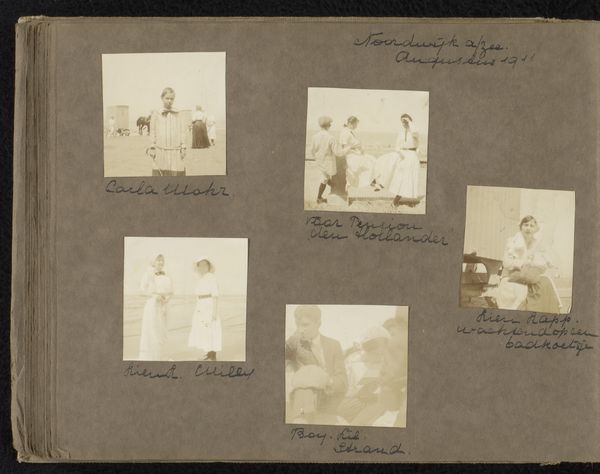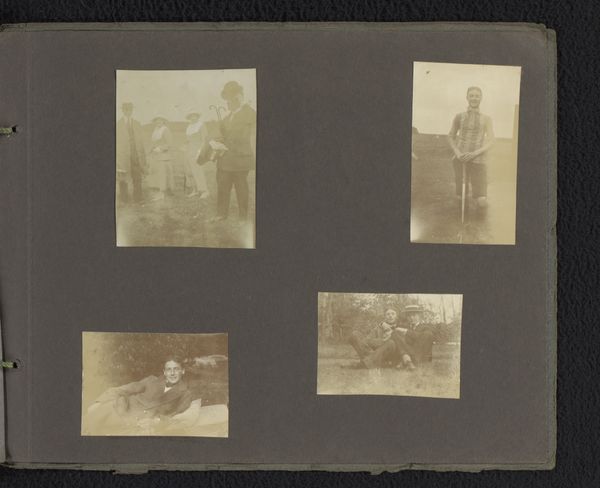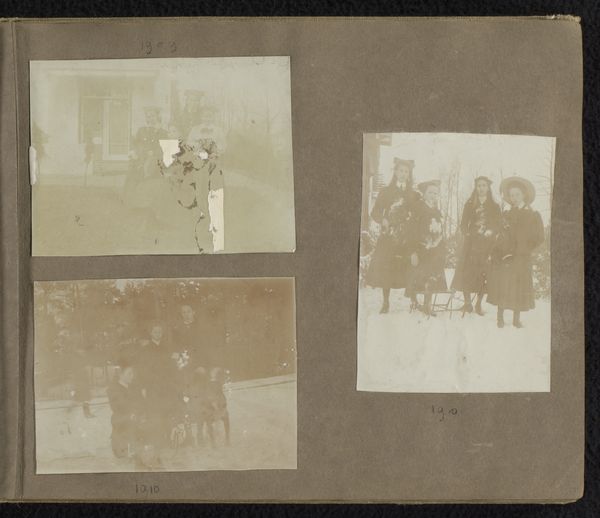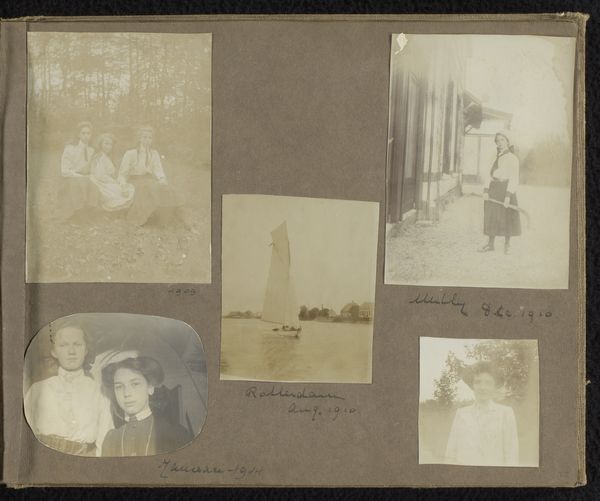
Drie foto's van Loentje Onnen en Winny Uhlenbeck, ook met andere vrienden 1911
0:00
0:00
Dimensions: height 203 mm, width 253 mm
Copyright: Rijks Museum: Open Domain
Editor: So, we’re looking at "Three photos of Loentje Onnen and Winny Uhlenbeck, also with other friends" taken in 1911. They are gelatin-silver prints mounted in what appears to be a photo album. The images are a bit faded and sepia-toned, giving them a rather nostalgic feel. What catches your eye when you consider this collection of portraits? Curator: The materiality speaks volumes. These gelatin-silver prints represent a specific industrial process, a democratizing force in early 20th-century image-making. We need to consider who had access to photographic materials, the resources needed to develop them, and how the circulation of these images impacted social relationships. Editor: So, you are seeing the value beyond the images themselves. Curator: Precisely. What’s fascinating is the social context embedded within the image and its means of production. This isn't just a personal snapshot; it’s a carefully constructed artifact made available through certain technology, handled by the sitters and the photographer. Notice the signs of wear, the emulsion fading – these are traces of past interactions and the consumption of the images, as a whole. How were such pictures of the rising middle class consumed at that time, and what were the consequences? Editor: So you’re highlighting that the album's existence itself is an insight into the materials and technologies of that era, a moment when photography was changing social interaction. What does looking at photos of 'friends' in the album tell us, then? Curator: This wasn't necessarily about "art" but rather about how industrial means influenced private expressions and documentation of friendship. To me, these portraits and this particular assemblage of them offer material insights into gender and labor involved in assembling family photo albums. Editor: It's making me think about the labor behind the final image–mining the silver, the manufacture of the paper, and the development process... Curator: Exactly! This collection pushes us to think critically about these unseen elements and to re-evaluate what constitutes artistic value in the context of labor and mass production. Thanks for making that connection!
Comments
No comments
Be the first to comment and join the conversation on the ultimate creative platform.
